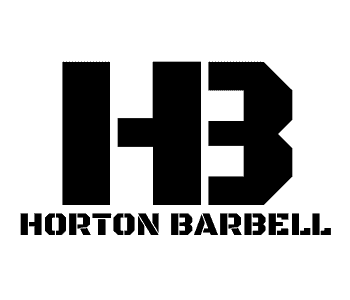How To Build Strength For Football (From a Strength Coach)
Improving your strength in the off-season can pay huge dividends on the football field in the fall. Being stronger can help you get off blocks easier, break tackles and drive people off the line of scrimmage.
Obviously, lifting weights can help you get stronger. So, the better question is probably not ‘how to increase your strength’, but instead ‘what is the best way to increase your strength’?
Strength training for football in a way that will give you the advantage over your opponents is not just about working hard, it’s about how to maximize every day, every set and every rep.
I’ve been a Collegiate Strength Coach for 20 years and in this article, I’m going to go over some of the basic principles of a football strength training program so you can optimize your off-season development.
Use Proper Technique to Reduce Risk of Injury
Why am I leading with ‘use proper technique’? Because if you hurt yourself in the gym, you can’t get better. Injuries can be a huge setback (or worse) to your off-season training and while some are completely unavoidable, injuries because of bad technique should never happen.
To give you an example, I love utilizing Olympic lifts with football players. Power Cleans, Hang Snatches and Jerks are some of my favorite exercises for football players.
However, if you don’t know how to do them properly and you get yourself hurt using bad technique then they’re not exactly helpful, right? So, stick to what you know and, if you can, try to find a qualified coach near you who can teach any exercise techniques that you want to learn.
Use Compound Movements

In addition to Olympic lifts, your off-season football program should predominantly include big, compound lifts. Compound movements involve multiple muscle groups and generally allow the lifter to move relatively heavy weights.
Some examples of compound movements are:
Squat Variations and Single-Leg Movements
- Back Squat
- Front Squat
- Lunges
- Step-Ups
Explosive Movements (and their variations – Hang, Power, etc)
- Cleans
- Snatches
- Push Press and Jerks
Upper Body Strength
- Bench Press
- Barbell Shoulder Press
- Clean and Snatch Pulls
- Pull-ups
- Bent Over Rows (and similar row variations)
Posterior Chain or “Hinges”
- RDL (aka Romanian Deadlift)
- Hypers
- Reverse Hypers
Sure, Dumbbell Curls, Side Raises and other isolation exercises have their place. I almost always include some isolation exercises toward the end of my workouts, but they shouldn’t be the main course.
If you want to add strength and a lot of it, then the large majority of your strength training exercises should be comprised of compound movements like the ones listed above.

Need a Program? Check out my Free 8-Week Advanced Football Program.
Rep Ranges and Volume
I’m going to try to address rep ranges and volume because one of the questions I’ve been asked the most my entire career is, “How many reps should I do?”
The subject of rep ranges and total volume within a strength program is a complex topic that entire books have been written about, but I’m going to try to do my best to answer it as simply as possible.
Generally speaking, you want to try to stay in the 4 to 6 rep range to focus on strength. However, this doesn’t mean every set of every exercise should be done in 4 to 6 reps.
Sometimes you’ll want to drop down in the 1 to 3 range which is generally meant for power development and sometimes you’ll be in the 8 to 12 range to focus on hypertrophy (mass).
Ultimately, your program should ebb and flow through differing levels of volume and intensity and follow some form of periodization.
Complete Strength and Conditioning Program

Keep in mind that improving your strength in the off-season is just one piece of the puzzle. Ideally, your strength training program should be just one component of a complete strength and conditioning plan.
A proper strength and conditioning program should include:
- Warm-ups
- Mobility and Flexibility
- Speed
- Agility
- Plyometrics
- Strength Training
- Conditioning
This doesn’t mean you need to do all of this at once and you definitely shouldn’t try to fit all of that into one day.
Depending on the time of year, your focus can shift from one area to another.
Here’s an example:
In the wintertime, conditioning isn’t as high of a priority because the next season is now months away. Instead, this is a great time to work on speed drills and speed mechanics. The speed mechanics players improve on in the winter time can then carry on with them throughout the remainder of the off-season and onto the football field.
In-Season Training

It’s important to note that strength training shouldn’t stop once the pads go on. Training during the in-season is just as important as training during the off-season.
Why?
First, football season is incredibly long. Depending on what level you’re playing at the season can last anywhere from 4 to 6 months. If you’re not strength training in-season then you’re missing out on almost half a year of development every year.
Think about that cumulatively. Throughout a 4-year career (high school or college) that’s two years’ worth of training. Imagine how much you could improve with an extra two years of training!
Second, remember that championships are won at the end of the year, not at the beginning. If you slack off on your in-season training that means you’ll be at your weakest of the entire year when it’s time to play for a ring.
On top of that, you’re going to have to spend the first month (or more) just working to get the strength back that you lost during the season.
That’s why it’s so incredibly important that you make strength training a year-round part of your development, not just in the “off-season”.
Get Proper Recovery
Technically speaking, strength gains don’t happen when you’re in the weight room. Strength training actually tears down muscle tissue. The time spent recovering between workout sessions is when the body builds itself back bigger and stronger.
I once had another Strength Coach explain to me that building muscle was like adding paint to a fence. If you just keep slapping paint on it, the paint will just run all over itself. But, if you let the paint dry and then add more paint you’ll keep adding more mass to the fence.
Optimizing your recovery is just as important, if not more so, than what you do in the gym.
Eat, Sleep, Hydrate

Staying hydrated, eating proper food and getting plenty (8 hours or more) of sleep at night are the three most critical components of your recovery.
Yes, there are all types of fancy recovery methods – from Normatec Boots to Cryo Chambers – but, many can be quite expensive and most athletes are simply not going to have access to them. However, water and sleep are free. And, food costs money, but good quality food doesn’t cost any more than chips and ho-hos.
Make sure you’re hydrating throughout the day – not just when you’re working out. Figure out a way to keep a water bottle on you at all times that works for you.
Get 8 hours of sleep a night and try to stick to a sleep schedule. I ran the sleep program with our team at Georgia Tech and one of the best tips I can give you to improve your sleep is to stick to a schedule. Try to go to bed and wake up at roughly the same time every day.
Finally, eat plenty of good sources of carbs and protein, and make sure you get a complete variety of vitamins and nutrients.

Free Football Strength Program
- 8 Weeks / 4 Days per Week
- Designed for Advanced Athletes with a Solid Training Foundation
- Same Programming I Used at Schools like Univ. of Tennessee & Georgia Tech
- 100% Online. 100% FREE.
Final Thoughts
I hope this article has helped to get you started with how you can start working to improve your strength for football season.
I also understand that all of this information can be a bit overwhelming and hard to know where to start. The good news is you’ve already taken the first step by being on this page and learning how to develop your strength for football. Attack one thing at a time and put in the consistent effort.
Good luck with training and good luck next season!

